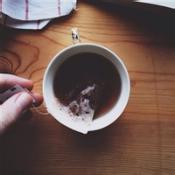Coffee made in Yunnan, China, from planting to picking cycle
Introduction of Coffee planting method
Coffee drying method (1) drying refining method: also known as natural drying method, is to spread the fruit in the open-air sun field, drying in the sun. To avoid uneven drying or fermentation, it must be stirred at the right time. The bright red fruit like a log cherry will turn black after a week in the sun, and the skin and flesh will become hard and easy to take off. At night, it is necessary to cover with a tarp to block the night dew. If the sun drying is smooth, the water content can reach 11% / 12%. This method has the advantages of simple process, low equipment investment and relatively low cost, so this semi-washing refining method has been adopted by almost all producing countries in the past: coffee semi-washing is a compromise between drying and washing. The practice is to wash the harvested coffee fruit, remove the skin and pulp mechanically, dry it with sunlight, and then dry it with a machine. It is different from the water washing method in that the coffee fruit is not put into the fermentation tank in the process, and the quality is more stable than the dry refining method. The Silado region of Brazil uses semi-washing to treat coffee.
Before long, small fruits appear in piles, first green, then yellow, then red or crimson, and can be picked almost black. In Jamaica, bats are the first to know whether the fruit is ripe or not. by sucking coffee pulp at night, they are telling people that the fruit is ripe and ready to be picked. The oval fruit gathers tightly around the branches, with slender, smooth dark green toothed leaves on both sides of the branches. The leaves on the sunny side are harder, the back is softer, the edges are fan-shaped, and the branches are opposite from the trunk.
Coffee trees are usually bred in nurseries, grow into seedlings, and then moved to coffee plantations a year later, in full compliance with the original Arab method of planting and cultivating coffee trees. In the first four or five years of its growth, the coffee tree will continue to take root downward, develop its trunk upward, and develop into an umbrella so that it can bear rich fruit and produce delicate white flowers with a fragrance like orange and jasmine. Sometimes it is just a tree blooming alone, like a young bride, sometimes the whole coffee garden is in full bloom, it looks like a sea of white flowers, beautiful and intoxicating. But the florescence is fleeting. Within two or three days, the petals are dispersed with the wind, leaving only the remaining fragrance in the air to produce low-grade coffee beans. Coffee farmers like to use labor-saving methods to collect beans, but in this way, the quality is not pure, impairing the taste of coffee and lowering the grade of coffee. The way to pick coffee beans in some parts of Africa is to shake the coffee tree, shake the fruit to the ground, and pick it up from the ground before the fruit rotts. Low-grade coffee is produced in most parts of Brazil, where coffee is picked by picking all the leaves, flowers, ripe and green fruit from the branches at a time. One of the characteristics of a damaged coffee tree that takes two years to recover from a normal coffee tree is that its fruit can bear fruit several times a year, and that flowers and fruits coexist at different stages of ripening. If the fruit is too ripe, the beans in it will rot. If the beans are not ripe, the beans will not ripen by themselves. So bean pickers often go through the same tree several times to look for ripe fruit, but they only get two pounds of coffee beans back and forth several times, usually the average yield of a tree is 2 pounds a year.


Important Notice :
前街咖啡 FrontStreet Coffee has moved to new addredd:
FrontStreet Coffee Address: 315,Donghua East Road,GuangZhou
Tel:020 38364473
- Prev

Introduction to the method of describing the flavor of Costa Rican Tarazhu coffee with high acidity
Costa Rica Tarazhu Coffee Coffee Raw Bean treatment Honey treatment. Honey treatment originated in Costa rica. to put it simply, honey treatment is a way to treat coffee with pectin and endocarp after the peel and flesh are removed. The key to distinguish between different honey treatments lies in the choice of the remaining pectin: retaining the proportion of pectin and drying speed and method. Yellow
- Next

Introduction to the Manor of Grinding characteristics of El Salvador Pacamara Coffee Bean Flavor description method
The environment of coffee beans in El Salvador is unfavorable, and far-sighted coffee farmers are still trying to find a niche in flavor and variety. The output and land area of the country are still unable to compete with neighboring countries such as Guatemala, Honduras and Nicaragua. there is no way to increase production and compete for the market share at low prices, but only by coming out of the characteristics to separate the market.
Related
- Detailed explanation of Jadeite planting Land in Panamanian Jadeite Manor introduction to the grading system of Jadeite competitive bidding, Red bid, Green bid and Rose Summer
- Story of Coffee planting in Brenka region of Costa Rica Stonehenge Manor anaerobic heavy honey treatment of flavor mouth
- What's on the barrel of Blue Mountain Coffee beans?
- Can American coffee also pull flowers? How to use hot American style to pull out a good-looking pattern?
- Can you make a cold extract with coffee beans? What is the right proportion for cold-extracted coffee formula?
- Indonesian PWN Gold Mandrine Coffee Origin Features Flavor How to Chong? Mandolin coffee is American.
- A brief introduction to the flavor characteristics of Brazilian yellow bourbon coffee beans
- What is the effect of different water quality on the flavor of cold-extracted coffee? What kind of water is best for brewing coffee?
- Why do you think of Rose Summer whenever you mention Panamanian coffee?
- Introduction to the characteristics of authentic blue mountain coffee bean producing areas? What is the CIB Coffee Authority in Jamaica?

